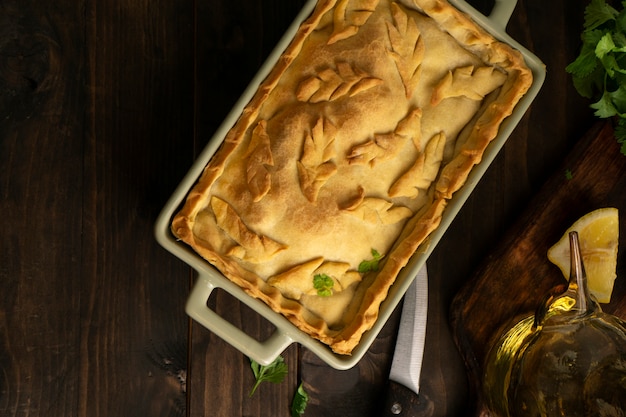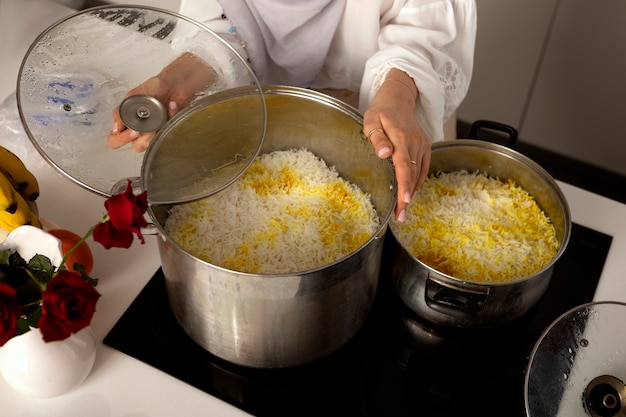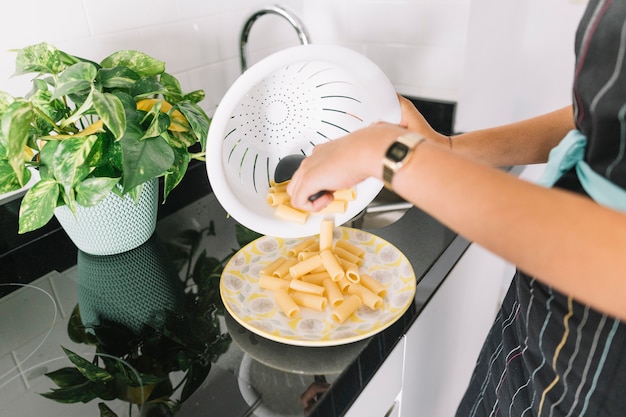Let’s face it, we all get stuck in a rut sometimes. I mean, who hasn’t found themselves reaching for the same old pasta or rice week after week? That was me, until I discovered the gloriousness that is spaghetti squash. It's been a game changer for me, a revelation! It's easy to make, incredibly versatile, and a nutritional powerhouse, making it the perfect side dish for any occasion.
Now, I'm not going to lie, I was initially a bit hesitant. Spaghetti squash? It sounded a little... strange, right? But let me tell you, my initial doubts quickly evaporated after just one bite. The flavour is incredible, it's surprisingly satisfying, and honestly, it's so easy to prepare that even I, a self-proclaimed kitchen novice, can handle it. I'm going to take you through the entire process, step-by-step, and share some of my favourite flavor combinations and tips along the way. Trust me, once you've tried it, you'll be wondering why you didn't make the switch sooner!
(Part 1) Choosing the perfect spaghetti Squash

First things first, we need to find the right squash. Picking a good one is crucial for success. Here's what you should be looking for:
Size and Shape
Think of a football, a nice, plump, football. That’s the size you want. Avoid anything too small or too large. The ideal squash should have a nice, smooth surface without any dents or soft spots, as those could be signs of spoilage.
Colour and Texture
The colour of a ripe spaghetti squash is a beautiful deep orange, like a sunset. The skin should have a slightly rough, bumpy texture, but it shouldn't be too hard or too soft. If it feels rubbery, it means it’s not quite ripe yet and won’t be as flavorful.
Weight
This is a big one! A good spaghetti squash should feel heavy for its size. This indicates it’s packed with moisture and, you guessed it, flavour! If it feels light, it might be dry and not as delicious.
(Part 2) Preparing the Spaghetti Squash

Now that you've found the perfect squash, it's time to get your hands dirty (figuratively, of course). Here's how to prep your squash for baking:
1. Cutting the Squash
Get your trusty chef’s knife ready. It’s crucial to have a good, sturdy knife for this, as you want to avoid any mishaps! Stand the squash upright on a cutting board and make a cut around the middle. If you’re nervous about cutting it straight through the middle, you can always cut it horizontally in half first.
2. Scooping out the Seeds
Now, it's time to remove the seeds and the stringy pith. Use a spoon to carefully scoop them out. You can save the seeds if you’re feeling adventurous – you can roast them for a delicious and healthy snack! Personally, I usually just toss them in the compost.
3. Adding Flavor
This is the fun part! Get ready to personalize your squash. Before baking, drizzle a little olive oil over the cut side, sprinkle with salt and pepper, or even add some herbs. I love to use a combination of olive oil, garlic powder, and Italian seasoning. You can even get creative with your seasonings – the possibilities are endless!
(Part 3) Baking the Spaghetti Squash

Now we’re getting to the good stuff! Baking the squash is the simplest part of the whole process. It’s a super hands-off method, which is perfect for those of us who like to multitask (or, you know, just relax).
1. Preheat the Oven
First things first, preheat your oven to 350°F (175°C). This ensures your squash bakes evenly and quickly, leaving you with a perfectly cooked treat.
2. Place the Squash on a Baking Sheet
Lay your two squash halves, cut-side down, on a baking sheet. You don’t need to grease the sheet, but you can if you like.
3. Bake for 30-40 minutes
Baking time will depend on the size of your squash, but a good rule of thumb is to bake it for 30-40 minutes. You’ll know it’s ready when it’s tender and easily pierced with a fork.
4. Rest the Squash
Once your squash is out of the oven, let it cool for 10-15 minutes. This makes it easier to handle. Once it’s cooled down, use a fork to gently scrape the flesh from the skin. The flesh will come away in long strands, just like spaghetti, hence the name!
(Part 4) Serving and Storing Spaghetti Squash
Spaghetti squash is a culinary chameleon, and you can use it in so many different ways. Here are just a few of my favourites:
1. As a Side Dish
This is the classic way to enjoy spaghetti squash, a perfect and healthy alternative to pasta. I love pairing it with grilled chicken, fish, or steak. It also goes beautifully with roasted vegetables or a simple salad.
2. In Salads
Spaghetti squash adds a delightful texture and flavour to salads, especially those with light vinaigrette dressings. The long strands mingle beautifully with fresh greens, adding a touch of substance and intrigue.
3. In Soup
A little bit of spaghetti squash can transform your favourite soups, adding substance and sweetness. It’s particularly delicious in creamy soups, like butternut squash soup or pumpkin soup, adding a new dimension of flavour and texture.
4. In pasta dishes
This is a game changer for anyone trying to reduce carbs. Simply replace the pasta with the cooked spaghetti squash strands. It’s an amazing way to enjoy your favourite pasta dishes, without compromising on taste or texture.
Storing Spaghetti Squash
Leftover spaghetti squash can be stored in an airtight container in the refrigerator for up to 3 days. It’s best to store it after it has been cooked and scraped. You can also store the whole squash in the refrigerator for up to a week. To reheat, simply microwave it for a few seconds or bake it in the oven at 350°F (175°C) until heated through.
(Part 5) Flavor Combinations to Try
One of the things I love most about spaghetti squash is its versatility. It’s a blank canvas ready for you to unleash your creativity. Here are a few flavour combinations to get you started:
1. Mediterranean Flavours
This is a classic combination that never disappoints. Before baking, drizzle the squash with olive oil, add a pinch of salt and pepper, and sprinkle with dried oregano, thyme, and basil. Serve with grilled chicken or fish and finish with a squeeze of lemon juice for a burst of fresh flavour.
2. Italian Herb Flavours
For a simple and satisfying flavour, Italian herbs are always a winner. Season the squash with olive oil, garlic powder, Italian seasoning, and salt and pepper. Serve with a side of marinara sauce, meatballs, or sausage.
3. Spicy Flavours
If you love a bit of heat, try adding some chili flakes or cayenne pepper to your spaghetti squash. You can also add a drizzle of sriracha sauce or a sprinkle of hot paprika for a fiery kick.
4. Asian-Inspired Flavours
For a more exotic flavour, try adding a touch of Asian inspiration. Season the squash with ginger, garlic, soy sauce, sesame oil, and chili flakes. Serve with stir-fried vegetables or tofu for a truly delicious and satisfying meal.
(Part 6) Nutrition Benefits of Spaghetti Squash
Spaghetti squash is not only delicious but also incredibly good for you. It’s a true nutritional powerhouse!
1. Low in Calories and Carbs
Spaghetti squash is a low-calorie, low-carbohydrate food, making it an excellent choice for anyone watching their weight or following a low-carb diet. One cup of cooked spaghetti squash contains about 40 calories and 10 grams of carbohydrates.
2. High in Fiber
Spaghetti squash is a great source of fiber, with about 3 grams per cup. Fiber helps keep you feeling full, making it easier to manage your weight. It also aids in digestion and can help lower cholesterol levels.
3. Rich in Vitamins and Minerals
Spaghetti squash is a treasure trove of vitamins and minerals, including vitamin C, vitamin A, potassium, and manganese. Vitamin C is a powerful antioxidant that helps protect your cells from damage. Vitamin A is essential for healthy vision and skin. Potassium is important for maintaining healthy blood pressure, and manganese helps with bone health.
(Part 7) FAQs
Now let's answer some common questions about spaghetti squash, so you can feel like a pro when it comes to this versatile veggie.
1. Can I eat the skin of the spaghetti squash?
Unfortunately, no. The skin of spaghetti squash is not edible. It’s tough and fibrous and won't soften during cooking like the flesh. Just discard the skin after baking the squash.
2. What's the difference between spaghetti squash and butternut squash?
Both spaghetti squash and butternut squash are types of winter squash, but they have distinct textures and flavours. Spaghetti squash gets its name from its long, stringy flesh that resembles spaghetti. Butternut squash is denser and sweeter, with a richer flavour.
3. Can I freeze spaghetti squash?
Freezing cooked spaghetti squash isn’t ideal as it can become watery and mushy when thawed. However, you can freeze raw spaghetti squash for later use. To freeze raw squash, cut it in half, scoop out the seeds, and wrap it tightly in plastic wrap or aluminum foil. You can store it in the freezer for up to 3 months.
4. Is spaghetti squash good for weight loss?
Yes, spaghetti squash can be a great addition to a weight loss diet. It’s low in calories and carbs and high in fiber. The fiber helps you feel full and satisfied, which can help you eat less overall.
5. What other squash can I use as a substitute?
While spaghetti squash is unique, there are other squashes that you can use as substitutes. acorn squash has a similar texture, although it’s a bit more dense. Butternut squash is another option, but it’s denser and sweeter.
(Part 8) Final Thoughts
There you have it, everything you need to know about making delicious oven-baked spaghetti squash! It's a fantastically versatile side dish that's easy to make and packed with nutrients. Try different flavour combinations to find your favourites.
I hope you'll give it a go next time you're looking for a healthy and satisfying side dish. I'm sure you'll love it as much as I do!
Everyone is watching

Corn on the Cob: The Ultimate Guide to Perfectly Cooked Ears
Healthy MealsAh, corn on the cob. Just the name evokes images of sunny days, barbecues, and that sweet, juicy flavour that ...

Perfect Pork Roast Oven Cooking Time: A Guide to Delicious Results
Healthy MealsThere's something truly satisfying about a perfectly roasted pork. The aroma alone is enough to make your mout...

Ham Cooking Time: How Long to Bake, Smoke, or Boil a Delicious Ham
Healthy MealsAh, ham. It's a classic, isn't it? A real crowd-pleaser, especially around holidays. And when done right, it'...

Scallops: The Ultimate Guide to Perfect Cooking
Healthy MealsAh, scallops. Those delicate, sweet, and utterly delicious morsels of the sea. They hold a special place in my...

Spaghetti Squash: The Ultimate Guide to Cooking and Serving
Healthy MealsRemember that time you saw spaghetti squash at the supermarket, looking all bumpy and strange, and thought, "W...
